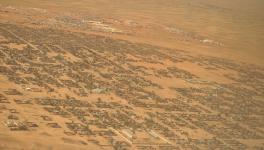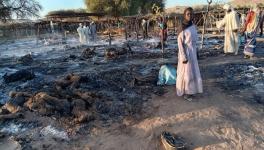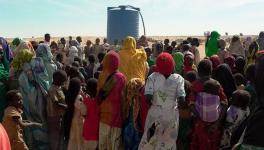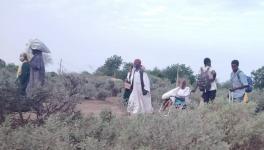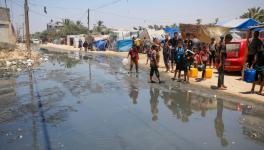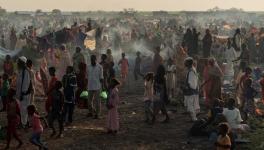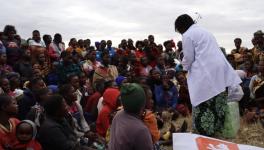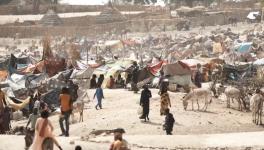Sudan: Thousands Suffer Cholera, No Medical Care in War-Torn Darfur
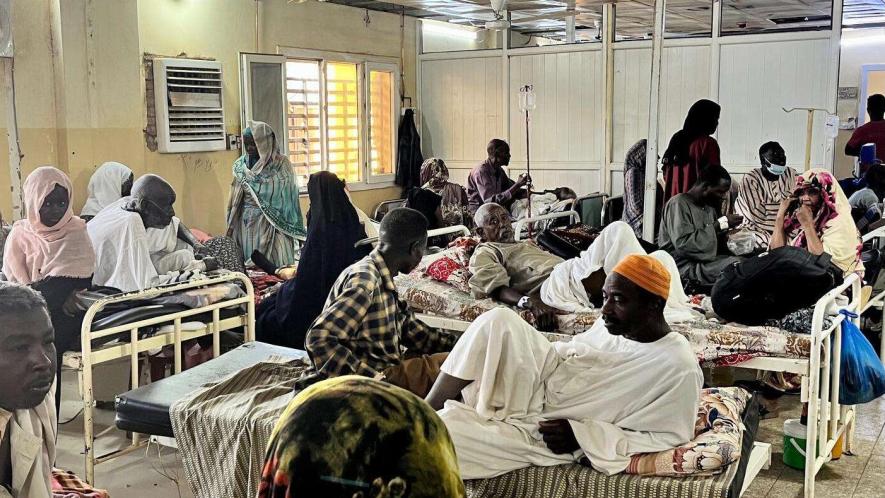
The crowded emergency room at the MSF-supported Al Nao Hospital in Khartoum. Photo: Doctors Without Borders
Lying over blankets spread out on the dirt in isolation centers thatched up with mud and straw, thousands, many visibly malnourished, suffer cholera with no medical care in Sudan’s western region of Darfur.
Since the outbreak in Darfur this June, the deadly disease has infected almost 12,200 people, claiming at least 509 lives as of Wednesday, September 17, when 135 new cases and 17 deaths were reported by the General Coordination of Darfur Displaced People and Refugees.
Its spokesperson, Adam Rojal, added that the rate of spread is increasing, killing at least 48 last week, when 1,665 fresh cases were recorded, “in addition to malaria” and “malnutrition among children”.
Numbers understate the severity of the epidemic because the underdeveloped healthcare infrastructure in Darfur, already ravaged by a regional civil war in the 2000s, has completely collapsed amid the fighting between the army and the paramilitary since April 2023.
No alternatives
In the absence of ambulances, local youth volunteers organized as ‘Emergency Rooms’ carry the infected on their shoulders or on donkeys to the makeshift isolation centers.
Even those centers in solid structures do not protect elements. Most of them are old, dilapidated classrooms with cracked walls, leaking roofs, and window openings with no frames and panes to hold out the wind, dust, and rain. Many of these structures are “on the verge of collapse”, but “there are no alternatives”, Rojal told Peoples Dispatch.
Local volunteers buy food at increasingly unaffordable prices from local markets for the patients in these centers. Only a few receive intravenous fluids, essential for life support in severe cases. “Many are dying due to the lack of access” to these fluids that are short in supply, and often unavailable in the market, he added.
Clinic in ground zero overwhelmed with wounded
Medics and healthcare facilities are few and far apart. In the Tawila area of North Darfur, where the disease spread is most concentrated with almost 5,500 of the 12,000-odd cases in Darfur, the clinic run by Doctors Without Borders (MSF) is overwhelmed by the injured people escaping from the state’s capital, El Fasher.
The city is the last regional foothold of the Sudanese Armed Forces (SAF), routed from the rest of Darfur by the Rapid Support Forces (RSF).
Laying siege for over 500 days now, the RSF has cut off El Fasher’s supply of food and other essentials. The worst and first affected by shortages were the camps for the Internally Displaced People (IDP) on the city’s outskirts. Already hosting hundreds of thousands from the civil war in the 2000s, their population swelled multifold as the fighting between RSF and SAF caused the world’s largest displacement crisis in Sudan.
Famine was declared in the Zamzam camp in August 2024. Spreading to several other areas since, it now looms over El Fasher itself.
The RSF has been repeatedly shelling this besieged, starving, and weakened population with artillery. The SAF’s indiscriminate airstrike on suspected RSF movements has also claimed civilian lives.
Survivors of starvation and violence take refuge in cholera-stricken IDP camps
“People attempting to escape El Fasher face killings, torture, sexual assault, and other extreme forms of violence along the route to Tawila,” the MSF said in a statement last week. Nevertheless, hundreds of thousands have fled to Tawila.
It has been a haven for the displaced since September 2023 when the Abdel Wahid al-Nur-led faction of the Sudan Liberation Movement (SLM), a rebel group not allied with either of the warring parties, took control of the area abandoned by the retreating SAF.
Displacement from El Fasher to Tawila – re-displacement in case of those fleeing from the IDP camps on the city’s outskirts – increased after the RSF’s siege, especially amid the intensified fighting this year.
In less than a month, the MSF in Tawila has treated “over 650 injured people, who have managed to escape from El Fasher”, including “50 wounded patients yesterday (September 10) alone,” said its statement.
“Some people have walked 60 kilometers on foot, bleeding from gunshot wounds and severe whippings, yet they are the fortunate few who survived the horrors of El Fasher and the journey to escape it,” added Sylvain Penicaud, MSF project Coordinator in Tawila.
Others have been left behind – too sick or wounded to endure the 60km perilous journey past the many dead bodies of those who were killed or succumbed to their wounds and hunger en route.
The survivors crowd in the relative safety of Tawila’s cholera-stricken IDP camps. Amid a lack of sanitation and toilets for its displaced population, swelling from 230,000 before this war started in April 2023 to more than 800,000 now, the monsoon brought cholera here in June.
While UNICEF “advises people to wash their hands with soap”, soap is not available in Tawila’s camps, abuzz with flies, AFP reported last month. Except for a few shallow wells that remain functional, their only source of water is the contaminated streams.
Soon after Darfur’s first case was reported in Tawila on June 21, the disease spread to all five states of this semi-arid region in the west, which was one of the last to fall victim. The federal health ministry had declared a cholera outbreak last monsoon in August 2024, after cases in Gedaref, Kassala, and other flooded states in the east. It had “spread to 84 localities in 11 states” by January 2025, the WHO reported.
In a media briefing earlier this month, its Director-General, Tedros Ghebreyesus, updated that the outbreak “had spread to all 18 states, with more than 105,000 cases and 2,600 deaths,” adding that the “situation is especially severe in the region of North Darfur.”
The disease has also crossed Sudan’s western border to Chad, where over a million refugees from Sudan are sheltering.
With over 1,400 suspected cases in this country, about a hundred people have succumbed in the month and a half since the first case was reported in mid-July, the Alliance for International Medical Action (ALIMA) reported.
“New patients are arriving every day, and the disease is spreading extremely fast,” said Samaké, ALIMA’s cholera emergency coordinator in Chokoyane district. “If we fail to bring the outbreak under control in the affected camps and villages, it could spread to the entire country.”
WHO has warned that not only Sudan’s immediate neighbors but the continent’s sub-region itself might be at risk.
Courtesy: Peoples Dispatch
Get the latest reports & analysis with people's perspective on Protests, movements & deep analytical videos, discussions of the current affairs in your Telegram app. Subscribe to NewsClick's Telegram channel & get Real-Time updates on stories, as they get published on our website.









